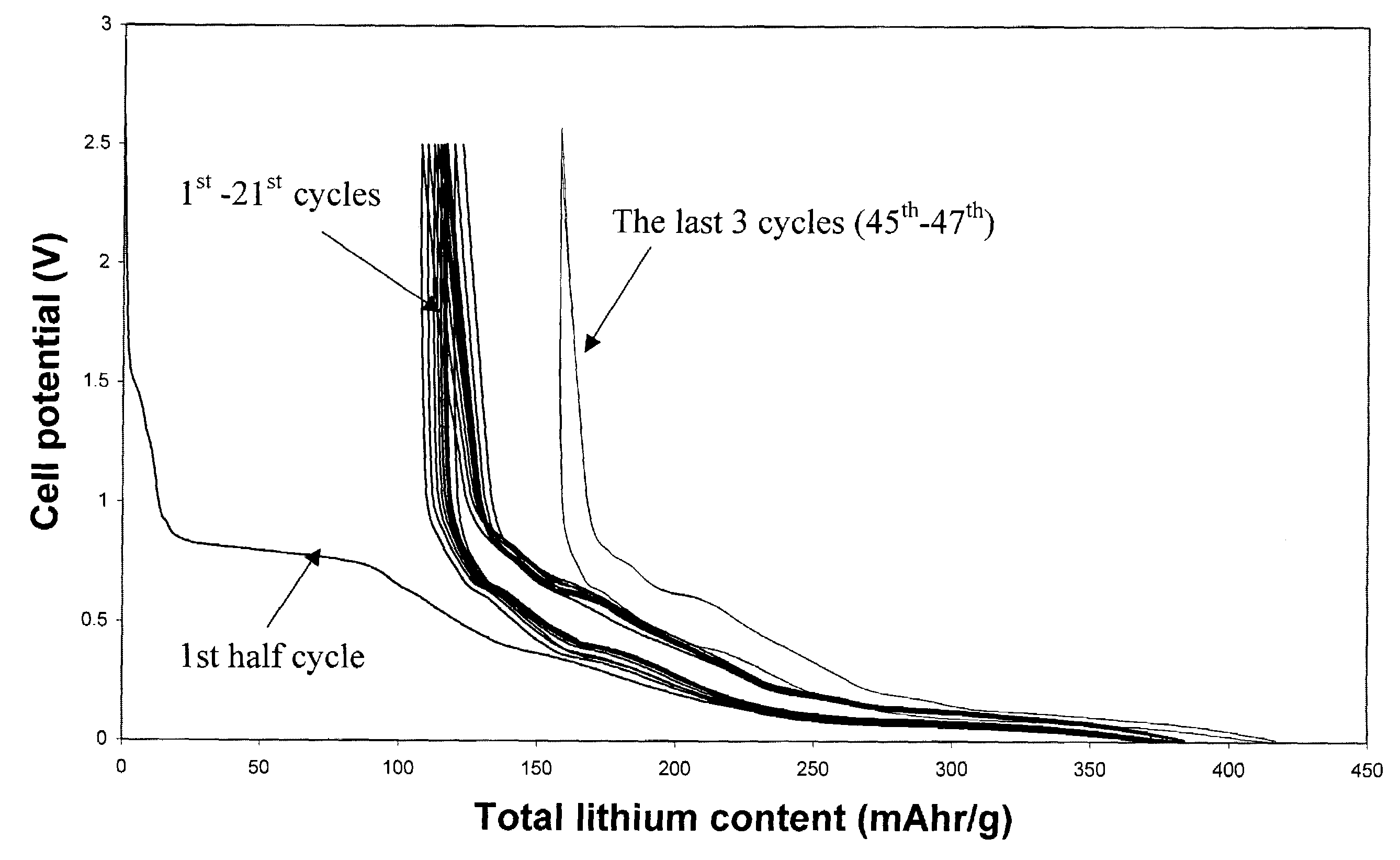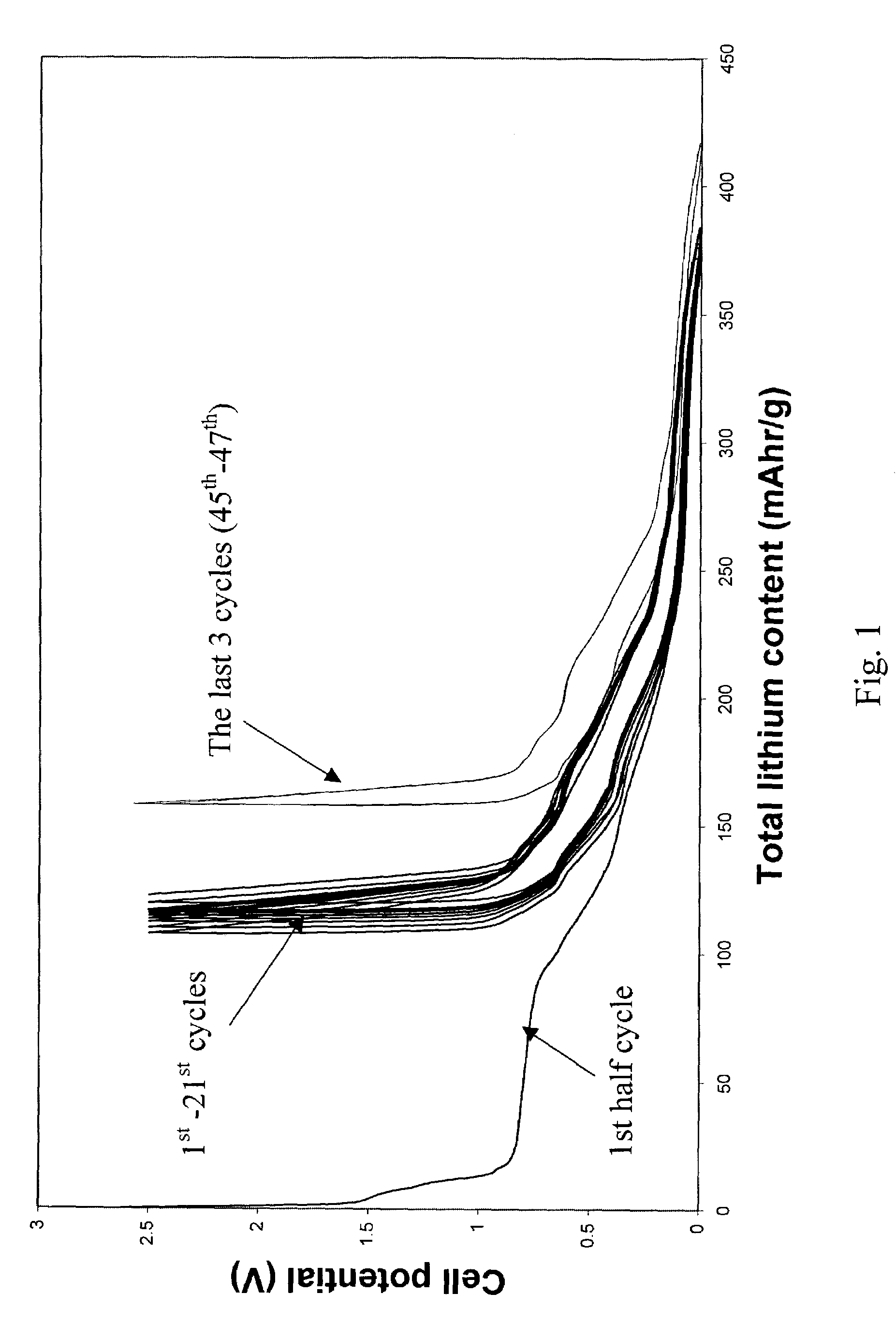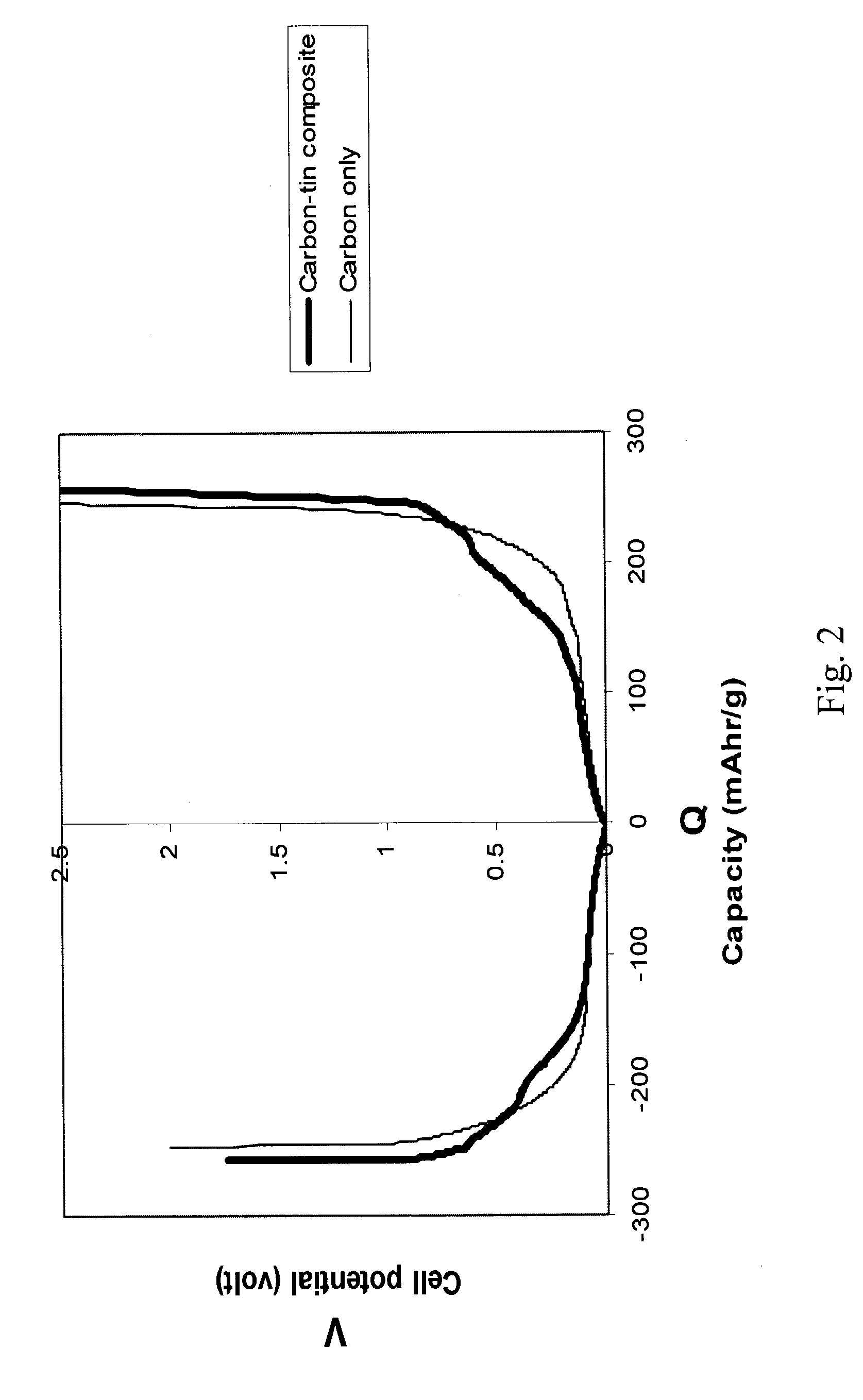Carbon materials metal/metal oxide nanoparticle composite and battery anode composed of the same
a technology of metal/metal oxide nanoparticles and composites, which is applied in the field of composite materials, can solve the problems of short cycle life, inability to produce metal chloride intercalated carbon as unwanted side-products, and inability to achieve the desired properties of multiphase composites, etc., and achieves high reversible capacity, high current density, and high cycle life
- Summary
- Abstract
- Description
- Claims
- Application Information
AI Technical Summary
Benefits of technology
Problems solved by technology
Method used
Image
Examples
example 1
[0039]Example 1 utilizes pitch based graphitized carbon fibers. The commercially available carbon fiber has an orderly structure, where graphene layers were perpendicular to the surfaces, and the majority of the atoms on the fiber surface where carbon atoms at the edge of the basal plane. Its diameter was about 10 μm. It x-ray diffraction (002) peak was at 3.37 Å. It was preheated in 1000° C. nitrogen and then electrochemically tested in a half cell C / 0.5M LiI-50 / 50 (vol %) EC and DMC / Li for its ability to store and release lithium. The anode sample was tied to the equipment using nickel string. No binder was used. The irreversible capacity was found to be as low as 10 mAh / g. After the 2nd cycle of lithium insertion / release, the reversible capacity fluctuate in a small range of 240±2 mA in the next 10 cycles, as long as the current density was kept below 40 mA / g.
[0040]After formation of the SEI layer reached completion (i.e., after cycles of lithium insertion and release at a curren...
example 2
[0041]Example 2 utilizes natural graphite flake. The commercially available graphite flake had an orderly structure, where the graphene layers were parallel to the surfaces, and only a small amount of carbon atoms on the surface were at edges of the basal plane. Its particle size was 50±30 μm. Its x-ray diffraction (002) peak was at 3.35 Å. It was preheated in 1000° C. nitrogen and then electrochemically tested in a half cell C / 0.5M LiI-50 / 50 (vol %) EC and DMC / Li for its ability to store and release lithium. PVDF was used as the binder. Copper foil was used as the substrate. The reversible capacity was found to be 310, 290, 260 and 250 mAh / g, respectively for the 1st 4 cycles of lithium insertion and release, where the current density was in the 10–15 mA / hr range. These results are different from those described in Example 1 in that this sample has higher irreversible capacity (see FIG. 4) and shorter cycle life. Such difference indicates that, for a lithium-ion battery application...
example 3
[0042]Example 3 utilizes carbon containing palladium nanoparticles. A graphite fluoride fiber sample CF0.6 was used to make this product. The CF0.6 fiber sample was made from the graphitized sample described in Example 1. The CF0.6 fibers were placed in a test tube with PdCl2 and CuCl2 under a nitrogen environment. Excess amount of chlorides were used such that the CF0.6:PdCl2:CuCl2: mass ratio was 2:4:1. The mixture was heated at 310° C. for 60 hours and then 370° C. for 10 hours. The product was stored in ambient air for some time, and then post-heated at 1000° C. in nitrogen, resulting in Pd nanoparticles in carbon.
[0043]This product is electrochemically tested in a half cell similar to those described in the above examples. Results of this test were compared to a similar test, which was conducted on a pure carbon sample whose properties was similar to the carbon part of this carbon-nanoparticle composite. Results of the first cycle lithium insertion / release are described in FIG....
PUM
 Login to View More
Login to View More Abstract
Description
Claims
Application Information
 Login to View More
Login to View More - R&D
- Intellectual Property
- Life Sciences
- Materials
- Tech Scout
- Unparalleled Data Quality
- Higher Quality Content
- 60% Fewer Hallucinations
Browse by: Latest US Patents, China's latest patents, Technical Efficacy Thesaurus, Application Domain, Technology Topic, Popular Technical Reports.
© 2025 PatSnap. All rights reserved.Legal|Privacy policy|Modern Slavery Act Transparency Statement|Sitemap|About US| Contact US: help@patsnap.com



